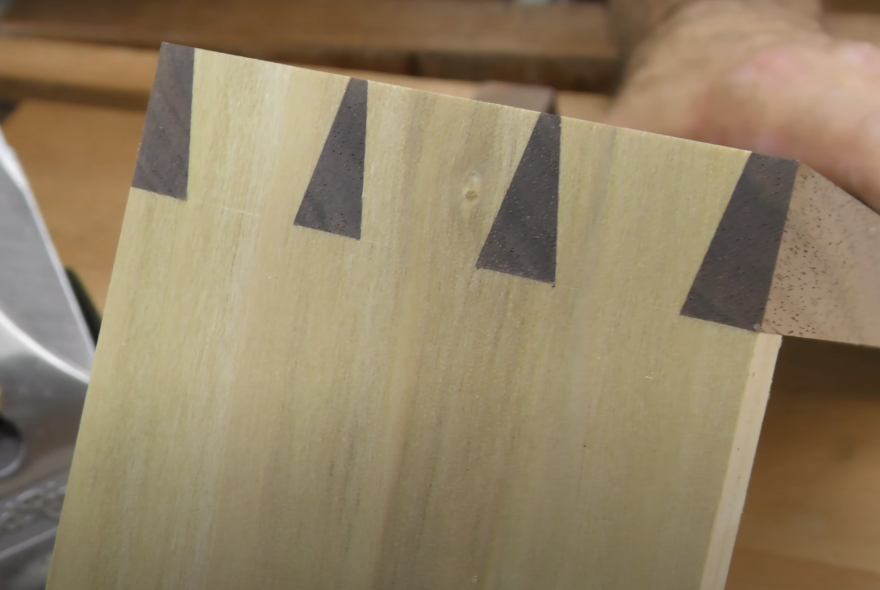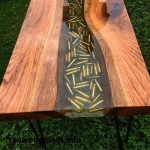Master The Art Of Woodworking Projects With Dovetail Joints: Unlock Your Creativity Today!
Woodworking Projects Dovetail Joints: The Perfect Blend of Functionality and Beauty
Woodworking has always been a testament to the craftsmanship and artistry of a skilled individual. From crafting furniture pieces to constructing cabinets, the process of creating something beautiful out of wood requires precision and attention to detail. One of the most important aspects in woodworking projects is the dovetail joint, a technique that not only enhances the structural integrity of the piece but also adds a touch of elegance. In this article, we will delve into the world of woodworking projects dovetail joints, exploring what they are, their benefits, and why they have become a staple in the woodworking community.
What are Dovetail Joints?
Dovetail joints are a type of woodworking joint that connects two pieces of wood at right angles, creating a strong bond that is resistant to pulling forces. The joint is created by interlocking trapezoidal pins on one piece with corresponding tails on the other. This unique design provides a mechanical advantage, making the joint incredibly durable and long-lasting. Dovetail joints are commonly used in cabinet making, drawer construction, and other woodworking projects that require sturdy connections.
2 Picture Gallery: Master The Art Of Woodworking Projects With Dovetail Joints: Unlock Your Creativity Today!


Who Uses Dovetail Joints?
Woodworkers of all levels, from hobbyists to professionals, utilize dovetail joints in their projects. The technique is highly regarded for its strength and aesthetic appeal, making it a popular choice among craftsmen and women. Whether you are a seasoned woodworker or just starting out, incorporating dovetail joints into your projects can elevate the overall quality and durability of your work.
When and Where to Use Dovetail Joints?

Image Source: hearstapps.com
Dovetail joints can be used in various woodworking projects, depending on the desired outcome. They are commonly employed in the construction of drawers, chests, cabinets, and jewelry boxes. The joint’s ability to withstand tension and resist pulling forces makes it ideal for applications that require frequent opening and closing, such as drawers. Additionally, dovetail joints are often showcased in visible areas of furniture, adding a touch of sophistication to the overall design.
Why Choose Dovetail Joints?
The popularity of dovetail joints stems from their numerous advantages. Firstly, their interlocking design provides superior strength compared to other types of joints. This makes them ideal for supporting heavy loads and ensuring the longevity of furniture pieces. Moreover, dovetail joints have an inherent self-locking mechanism, preventing the pieces from separating under stress. This results in a more durable and long-lasting connection.
Secondly, dovetail joints are aesthetically pleasing. The interlocking pins and tails create an intricate pattern that adds visual interest to the piece. This decorative feature has made dovetail joints a hallmark of fine woodworking. Whether hidden or on display, dovetail joints can enhance the overall beauty of a furniture piece or woodworking project.
How to Create Dovetail Joints?

Image Source: ytimg.com
Creating dovetail joints requires skill and precision. Traditionally, dovetails were hand-cut using chisels, saws, and other hand tools. However, advancements in technology have introduced various methods to simplify the process. Today, woodworkers can choose between hand-cutting dovetails, using a dovetail jig, or utilizing CNC machines for precise and efficient results. Whichever method you choose, it is crucial to pay attention to the angle and spacing of the pins and tails to ensure a tight fit and a strong joint.
FAQ: Frequently Asked Questions about Dovetail Joints
Q: What types of wood are suitable for dovetail joints?
A: Dovetail joints can be created using a wide range of wood species. Hardwoods such as oak, walnut, and cherry are common choices due to their strength and durability. However, softer woods like pine or cedar can also be used depending on the specific project and its requirements.
Q: Do I need special tools to create dovetail joints?
A: While traditional hand tools can be used to create dovetail joints, there are specialized tools available that can simplify the process. Dovetail jigs, dovetail saws, and chisels designed for dovetailing are some examples. These tools can help ensure accuracy and efficiency in creating the joint.
Q: Can dovetail joints be made using machines?
A: Yes, dovetail joints can be created using machines such as a dovetail jig or a CNC machine. These tools enable precise and consistent results, especially when multiple joints need to be made. However, some woodworkers still prefer the traditional hand-cutting method for its craftsmanship and personal touch.
The Pros and Cons of Dovetail Joints
Pros:
Superior strength and durability
Enhances the beauty and visual appeal of woodworking projects
Provides a self-locking mechanism that prevents separation under stress
Can be created using various methods, catering to different skill levels
Cons:
Requires precision and attention to detail
Time-consuming, especially for hand-cut dovetails
May require specialized tools or machines
Can be challenging for beginners
Conclusion: The Perfect Blend of Functionality and Beauty
Woodworking projects dovetail joints are a testament to the craftsmanship and skill of woodworkers. These interlocking joints not only provide exceptional strength and durability but also enhance the overall beauty of the piece. Whether you are constructing drawers, cabinets, or intricate furniture pieces, incorporating dovetail joints into your woodworking projects will undoubtedly elevate the quality and aesthetics. While creating dovetail joints may require practice and precision, the end result is a stunning and long-lasting connection that showcases the true artistry of woodworking.
This post topic: Crafts



